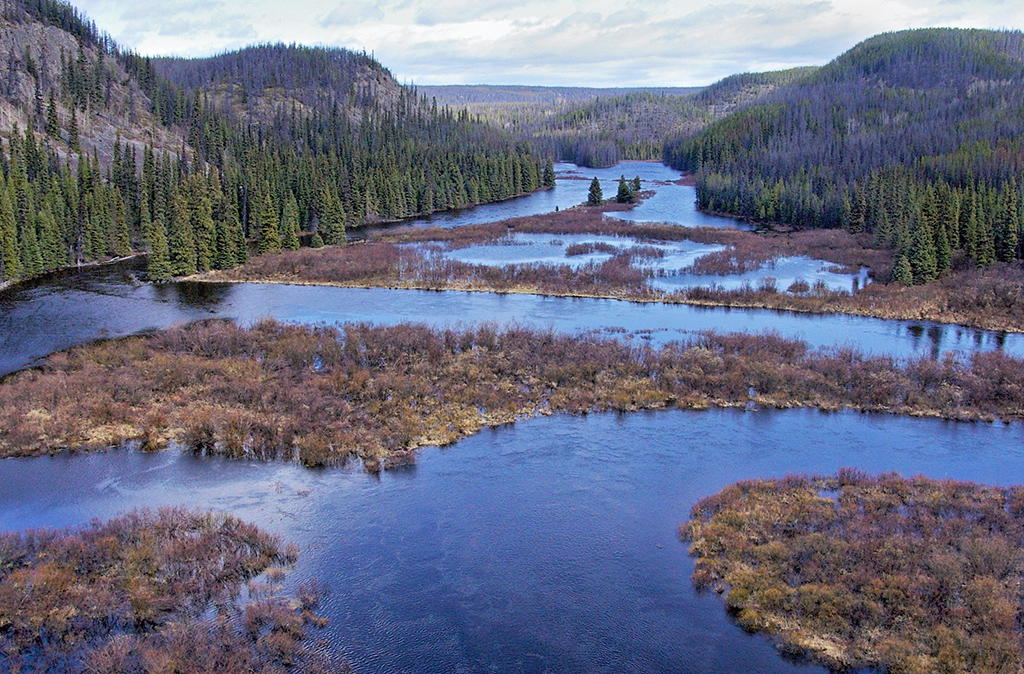Wetlands, Lakes and Rivers
Wetlands, lakes and rivers support a diversity of birds and other wildlife. Wetlands, particularly in dry areas, can be some of the most productive areas on the landscape. Wetlands, lakes and other water features are also relatively rare, covering only about 5% of the Canadian Intermountain Region. The highest densities of wetlands are found at low and middle elevations in the central interior of BC, and are considerably rarer in the southern interior and in mountainous terrain.
Wetlands, lakes and rivers are also some of the most threatened habitats. In the CIJV, human developments are often clustered around lakes or along major rivers. Large amounts of wetland habitat have been lost, particularly in the agricultural areas along valley bottoms. Expanding human populations continue to encroach on remaining habitats, reducing their availability and often significantly decreasing their quality.
Priority Species *
American Avocet, American Bittern, American Dipper, American White Pelican, American Wigeon, Bank Swallow, Barrow’s Goldeneye, Black Swift, Black Tern, Bufflehead, California Gull, Caspian Tern, Cinnamon Teal, Clark’s Grebe, Common Loon, Common Tern, Double-crested Cormorant, Forster’s Tern, Franklin’s Gull, Gadwall, Great Blue Heron, Green-winged Teal, Gyrfalcon, Hooded Merganser, Horned Grebe, Lesser Scaup, Mallard, Northern Harrier, Peregrine Falcon, Redhead, Red-necked Phalarope, Ring-necked Duck, Rough-legged Hawk, Ruddy Duck, Rusty Blackbird, Sanderling, Short-eared Owl, Thayer’s Gull, Trumpeter Swan, Virginia Rail, Western Grebe, White-winged Scoter, Wilson’s Phalarope.
* Priority species have been adapted from those identified in Environment Canada’s Bird Conservation Strategies for the region (Environment Canada 2013a,b). Species assessed by COSEWIC as Special Concern, Threatened or Endangered are in bold.
Threats to Wetlands, Lakes and Rivers
- Wetlands located near human developments (e.g., urban or industrial areas, roadways, etc.) or in areas suitable for agriculture may be drained or infilled. Significant areas of wetland have been lost to these activities in the past and encroachment continues today.
- Wetlands are vulnerable to livestock grazing, which removes wetland vegetation, compacts soils and adds nutrients to water.
- Creation of large reservoirs for hydroelectric projects has flooded valuable wetland and riparian habitats. Dams, flood control and other water management also alter natural hydrological cycles, and poorly managed water level changes degrade habitat. Excessive human water use can also lower water tables and reduce available habitat.

Many species—particularly colonial breeding birds—are highly sensitive to disturbance and breed at a limited number of sites in the CIJV. Disturbance at these sites can reduce their breeding success or induce abandonment and breeding failure.
- In the future, wetlands and water-associated birds may be most at risk from climate change. Wetlands will become fewer and smaller due to water loss, and remaining wetlands will become shallower and less permanent. Changes in precipitation patterns will impact hydrological cycles in all freshwater habitats, and potentially exacerbate water supply problems.
CONTACT US
Andrew Huang
CIJV Coordinator
andrew.huang@canada.ca




















